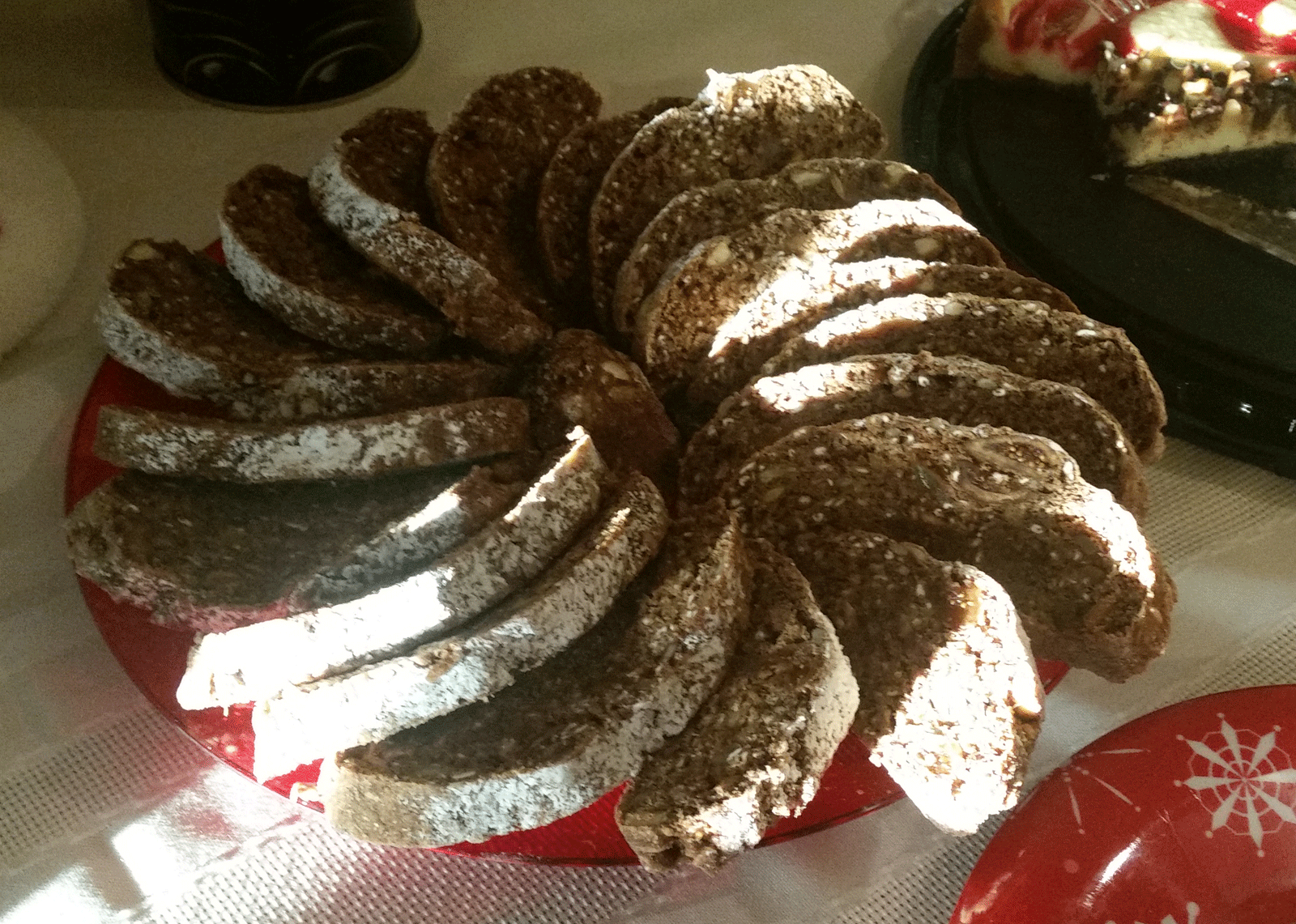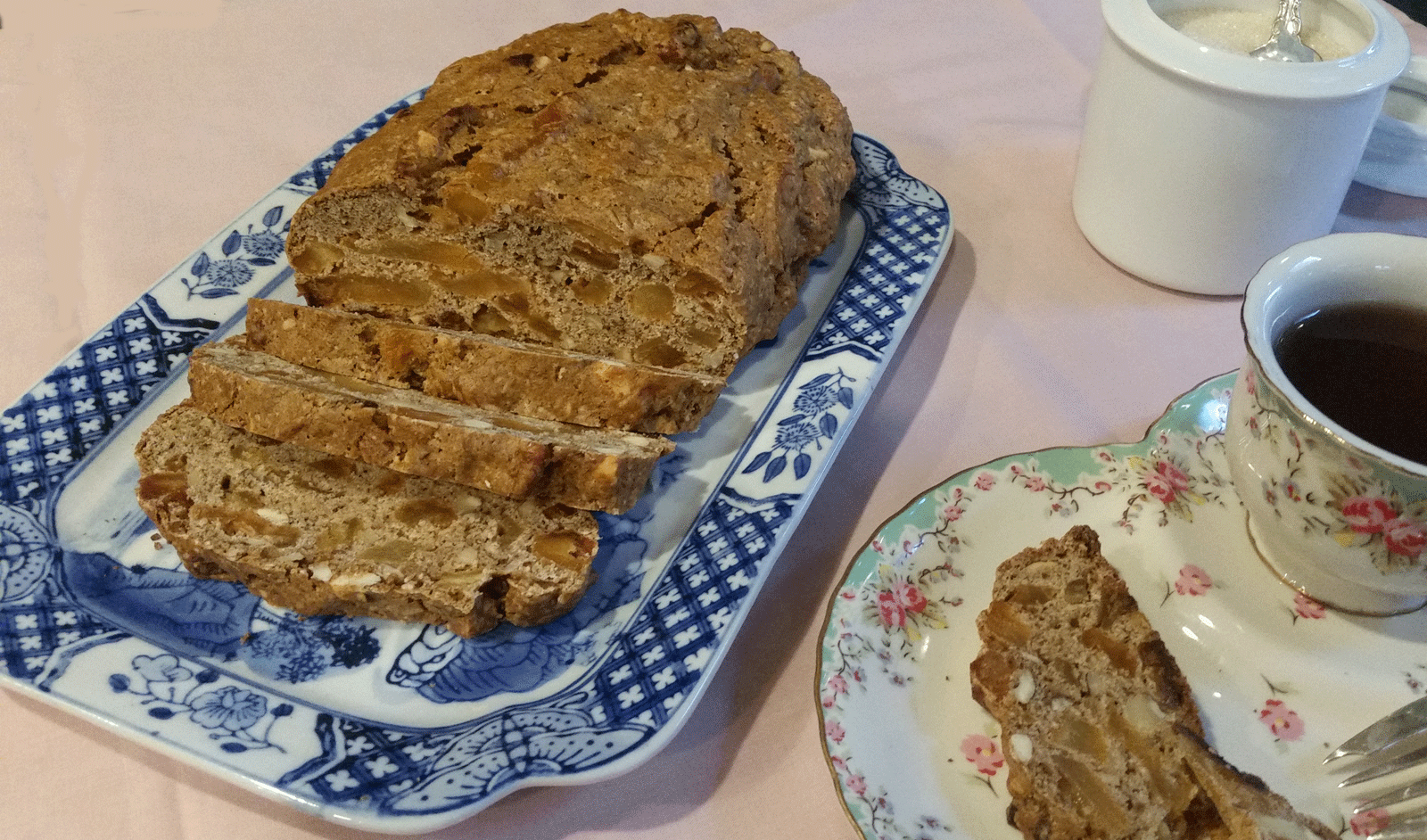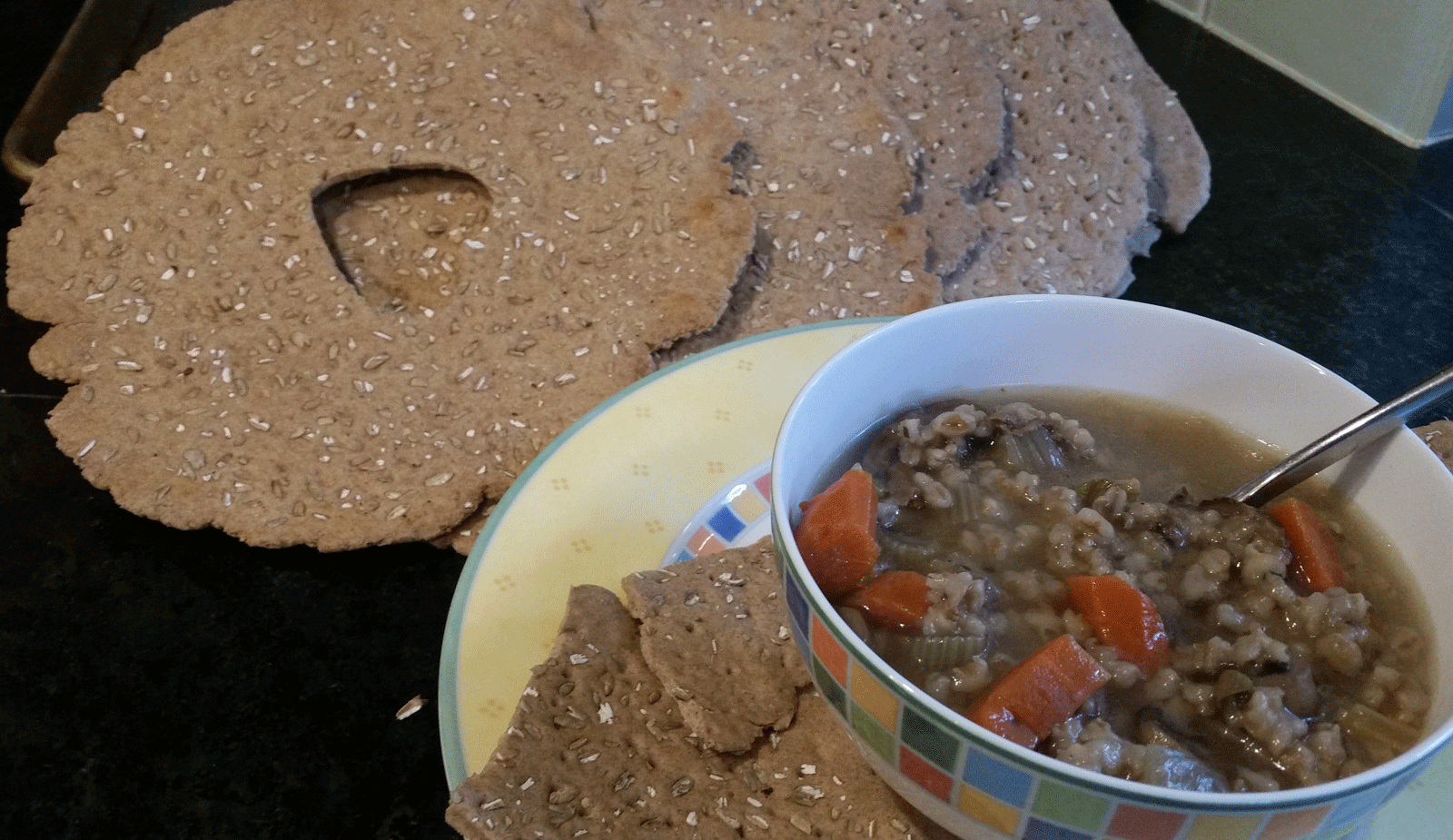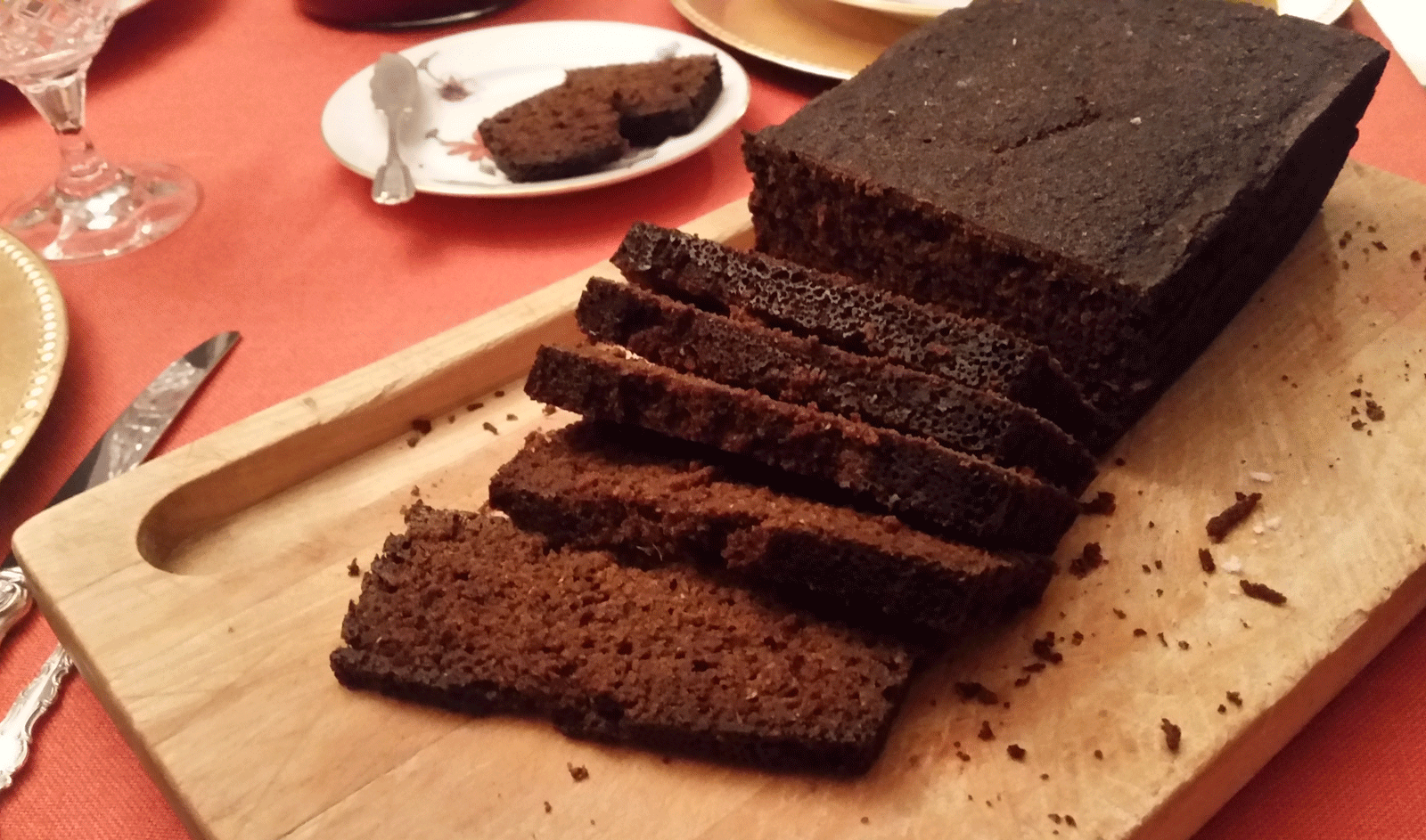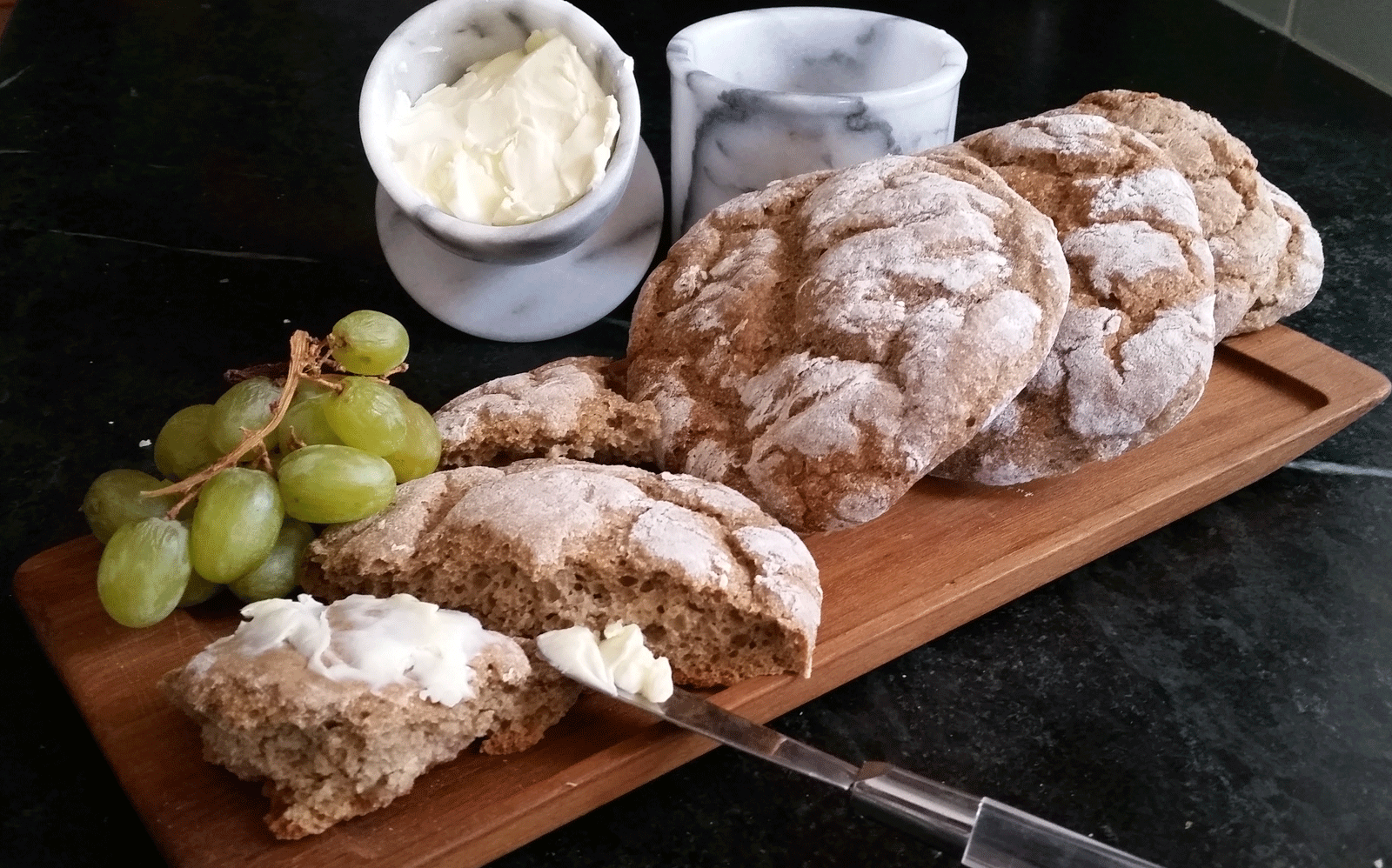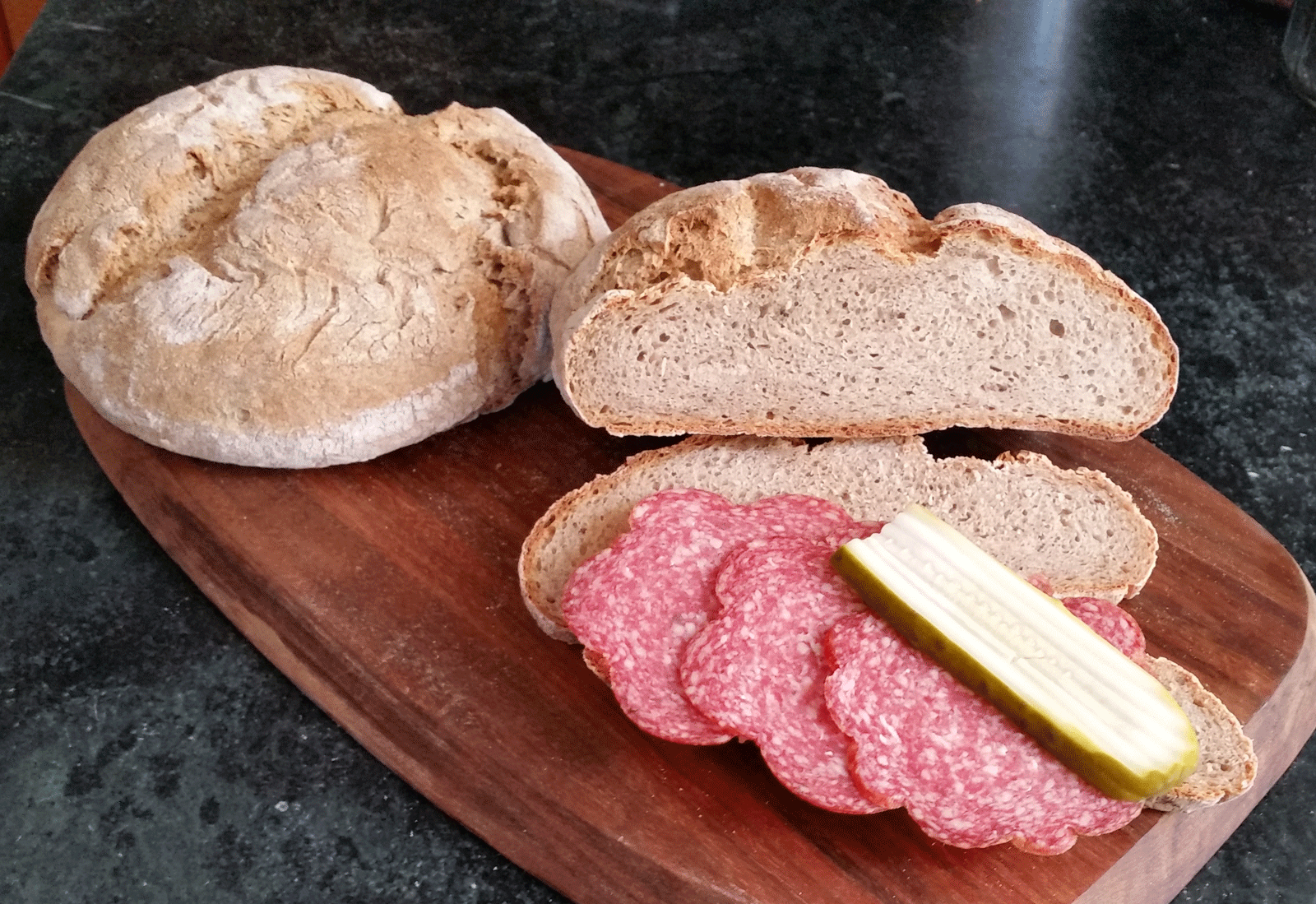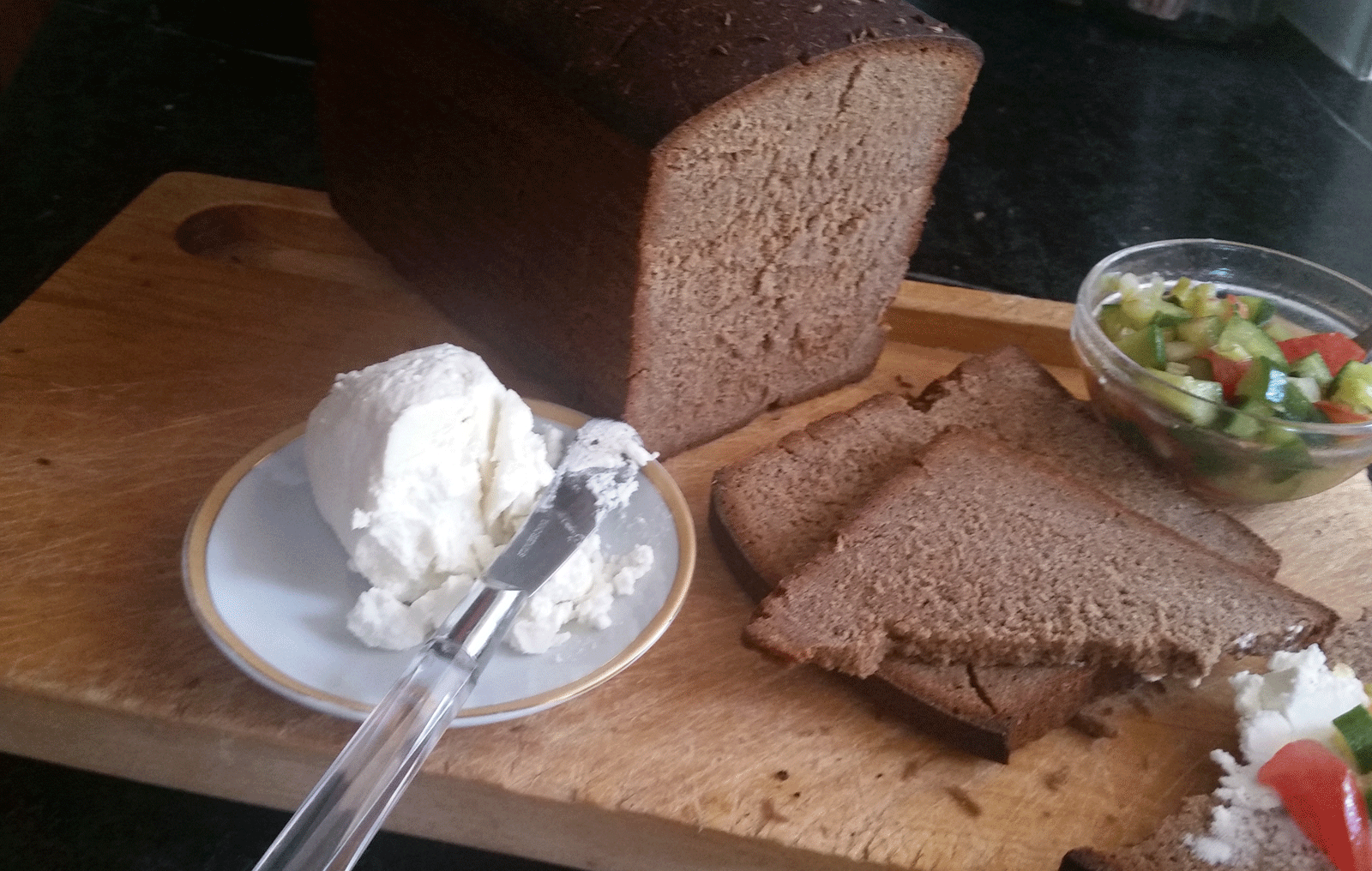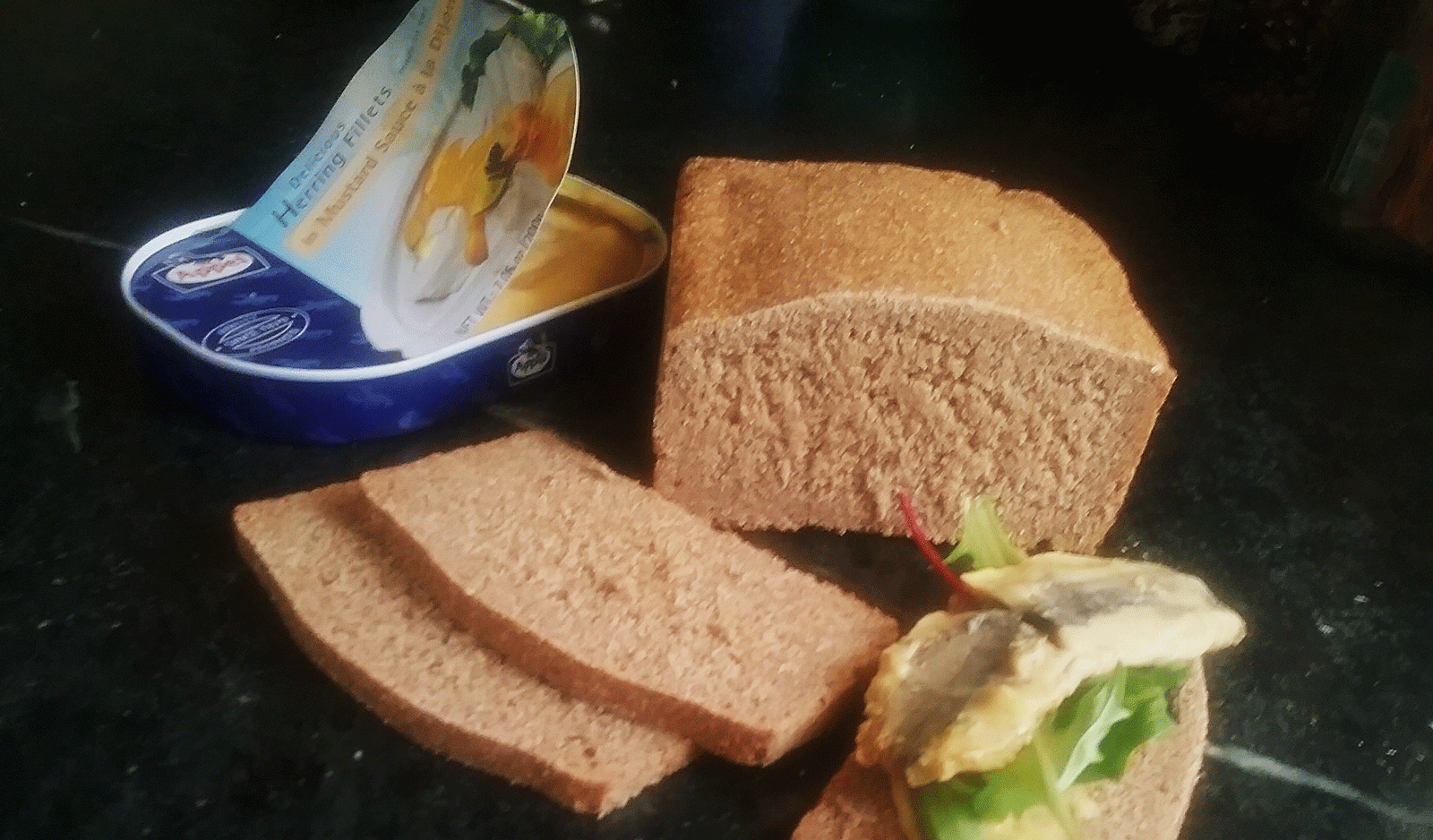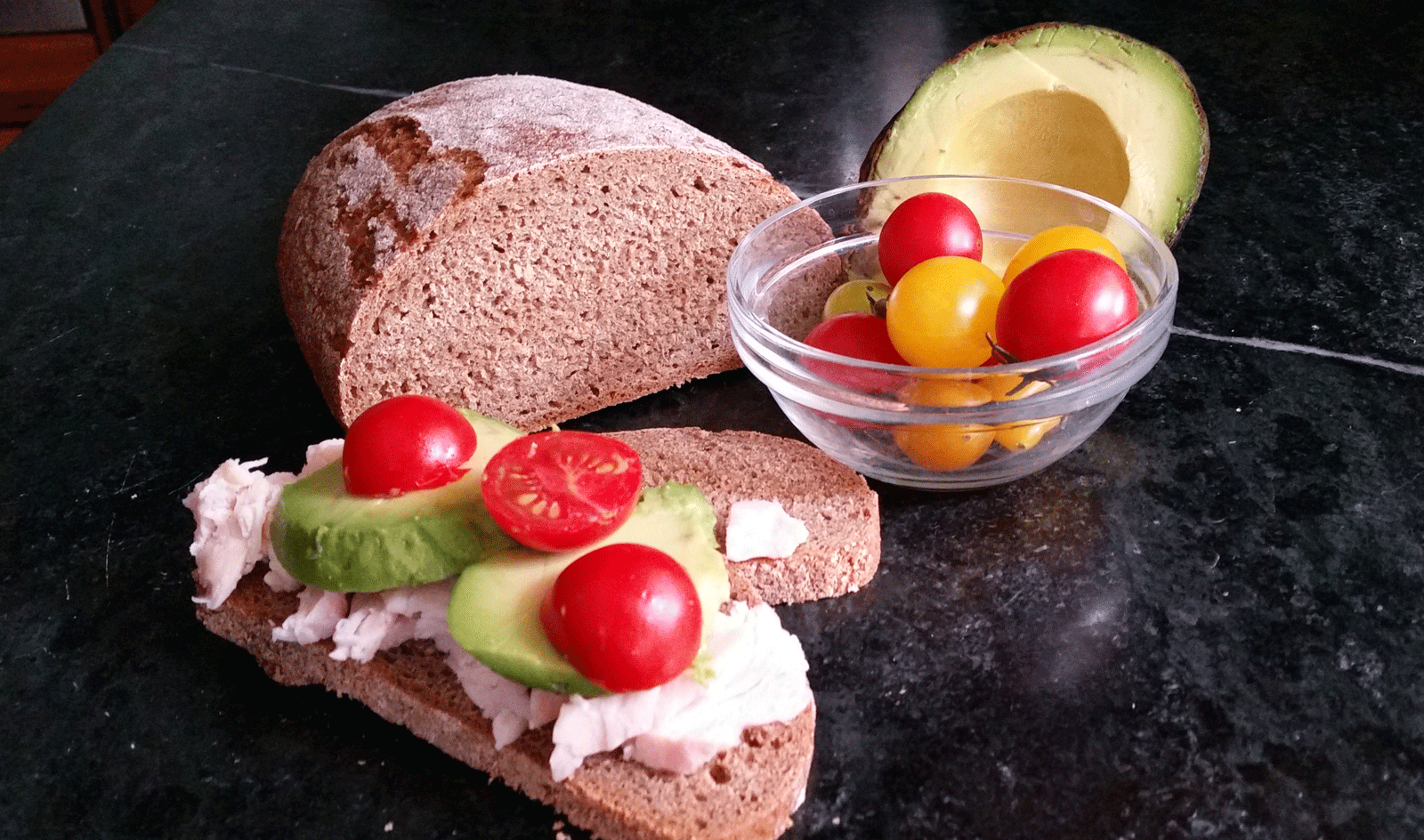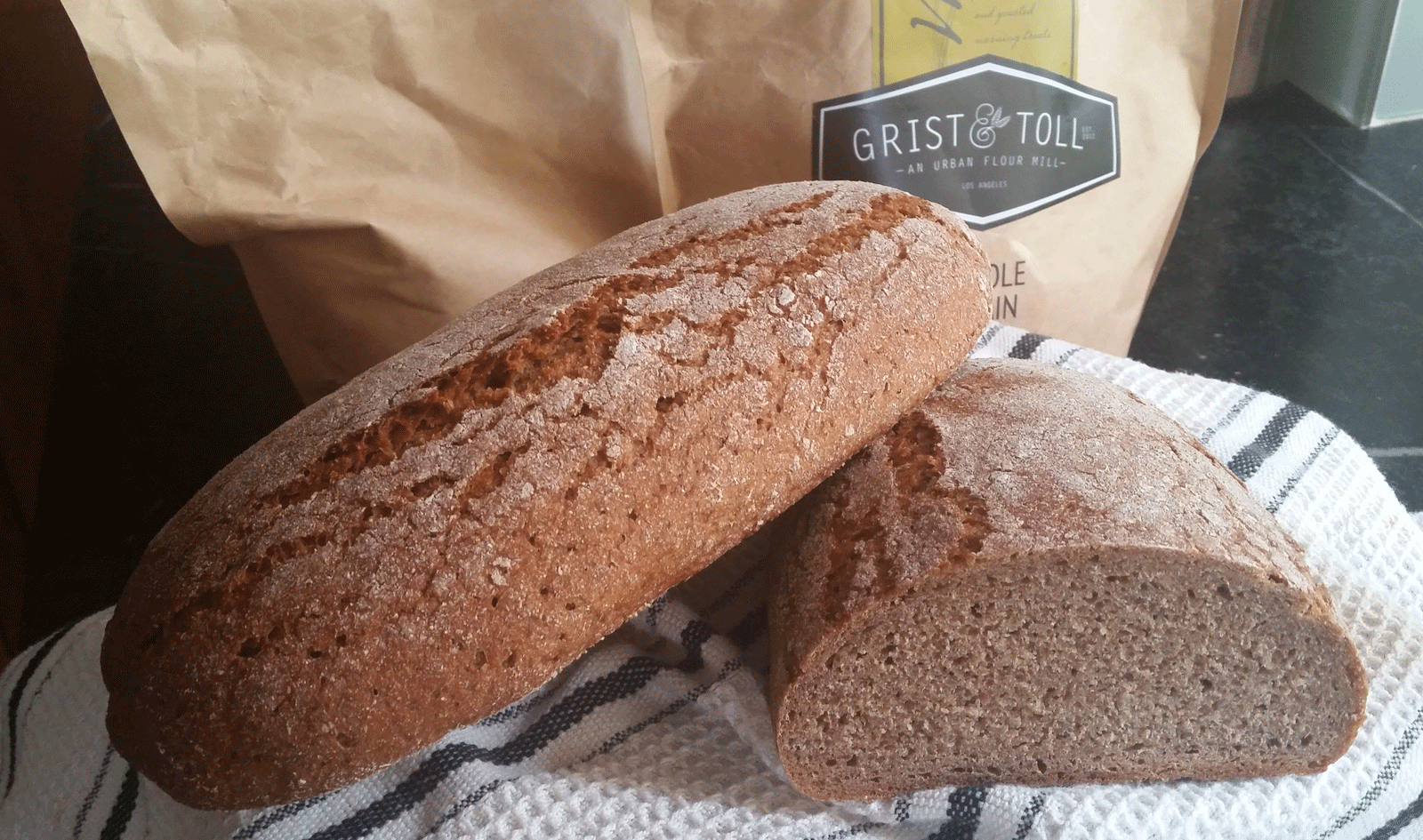| Rye %: | 36% |
| Stages: | Scald, Final dough |
| Leaven: | Instant yeast |
| Start to Finish: | 4½-5 hours |
| Hands-on Time: | 20-30 minutes |
| Yield: | Two 2¾ lb/785 g loaves |
Thinking about my third and final holiday bread for 2016, I decided that I wanted something halfway between the savory Christmas Crispbread and sweet Bavarian Ketzapiren I’d already posted. This Hazelnut-Fig Loaf immediately came to mind. Like many Finnish Christmas loaves, this one is based on a mixed wheat-rye dough, sweetened with syrup and enhanced with the sweet-bitter notes of roasted barley malt. What sets this one apart is its use of chopped figs and hazelnuts, sunflower seeds and coarse rye meal. All of these combine to produce a coarse, complex mouth feel that plays beautifully against an equally complex flavor profile of understated sweetness, nuttiness, coffee and subtle sour.

